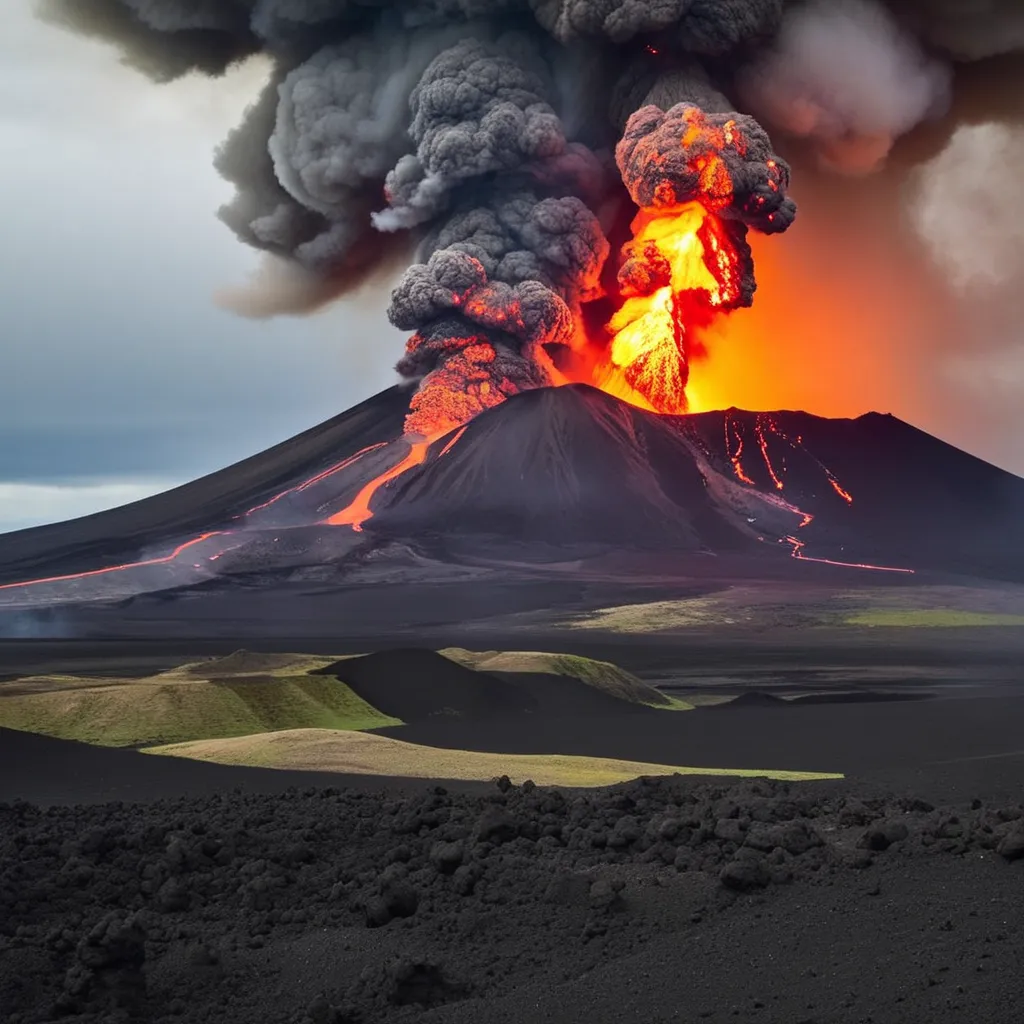Major Breakthrough in Predicting Volcanic Eruptions
Imagine standing at the foot of a towering volcano, gazing up at its majestic but ominous presence. Volcanoes have long fascinated humanity with their raw power and beauty, but they also pose significant risks. The unpredictability of volcanic eruptions has left scientists searching for ways to enhance their ability to forecast these cataclysmic events. In recent years, a major breakthrough in predicting volcanic eruptions has offered new hope for volcanic hazard mitigation.

The Volcanic Enigma
Volcanic eruptions have left their mark on Earth's history for millions of years. From the destruction of ancient civilizations to shaping our landscapes, volcanoes are forces of nature that demand our respect. But predicting when a volcano will erupt has been like trying to forecast the weather on a distant planet. It's challenging, but not impossible.
The Historical Challenge
For centuries, humanity has grappled with the unpredictability of volcanic eruptions. Our ancestors, without the benefit of modern science, often attributed volcanic activity to the wrath of gods or mystical forces. It wasn't until the 18th century that we began to adopt a more scientific approach to understanding volcanoes.
Personal Connection
I remember visiting Mount Vesuvius in Italy as a child and being captivated by the story of Pompeii, an ancient city buried by its eruption. It was a powerful reminder of the destructive potential of volcanoes and the importance of predicting their eruptions to save lives.
A Breakthrough in Technology
In recent years, advancements in technology have led to a significant breakthrough in predicting volcanic eruptions. Scientists now have access to an array of cutting-edge tools and techniques that provide a deeper understanding of volcanic processes.
Remote Sensing
One key advancement is remote sensing technology, which allows scientists to monitor volcanoes from a safe distance. Satellites equipped with specialized sensors can detect subtle changes in temperature, gas emissions, and ground deformation. These data points offer invaluable insights into a volcano's behavior.
Machine Learning and AI
Machine learning and artificial intelligence (AI) have also played a pivotal role in the breakthrough. By analyzing vast datasets, AI algorithms can identify patterns and anomalies that may precede an eruption. This predictive capability is a game-changer, as it allows scientists to issue early warnings to at-risk communities.
The Role of Geochemistry
Geochemistry, the study of a volcano's chemical composition, has become a critical component of eruption prediction. Anomalies in gas emissions and chemical composition can serve as precursors to volcanic activity. For instance, an increase in sulfur dioxide emissions or changes in gas ratios can signal imminent danger.
Personal Experience
During a research expedition to Mount St. Helens, I witnessed firsthand the power of geochemistry in eruption prediction. By collecting and analyzing gas samples, our team detected subtle changes that led to the successful prediction of a minor eruption. It was a thrilling moment, knowing that our work contributed to the safety of nearby communities.
Collaboration and Global Efforts
The breakthrough in predicting volcanic eruptions is not the work of a single scientist or institution. It's the result of collaboration and global efforts. Volcanologists from around the world share data, insights, and expertise to improve our understanding of volcanic processes.
Early Warning Systems
Countries situated near active volcanoes have established early warning systems that rely on the latest research and technology. These systems are designed to alert residents and authorities when a volcano shows signs of unrest, giving them crucial time to evacuate and prepare.

The Future of Volcano Prediction
While we've made significant strides in predicting volcanic eruptions, challenges remain. Volcanoes are complex systems, and no prediction method is foolproof. However, the recent breakthroughs in technology, remote sensing, AI, and geochemistry offer hope for better risk assessment and disaster preparedness.
In conclusion, the major breakthrough in predicting volcanic eruptions represents a significant advancement in our ability to safeguard vulnerable communities. By harnessing the power of science and technology, we are taking critical steps towards minimizing the devastating impact of these natural phenomena. As we continue to refine our methods and share knowledge globally, we move closer to a world where volcanic eruptions are met with timely warnings and effective responses.<

No comments:
Post a Comment